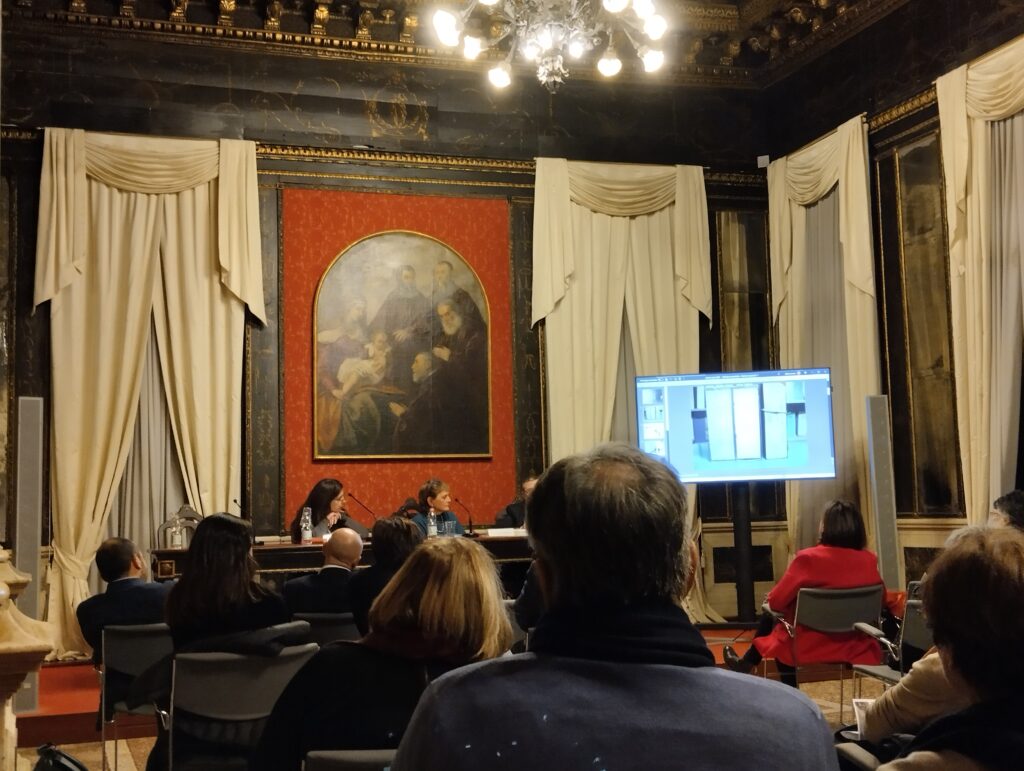The Vajont tragedy
The Vajont disaster occurred on the evening of October 9, 1963, in the newly constructed artificial hydroelectric reservoir of the Vajont stream in the valley of the same name (on the border between Friuli-Venezia Giulia and Veneto). The collapse of Monte Toc into the artificial reservoir caused the overflowing of the reservoir and a deluge of water, mud, and submerged rocks that engulfed the valley settlements. The breaching of the dam by the generated wave led to the flooding and destruction of settlements in the Veneto valley, including Longarone, and resulted in the deaths of 1,917 people, including 487 children and adolescents.
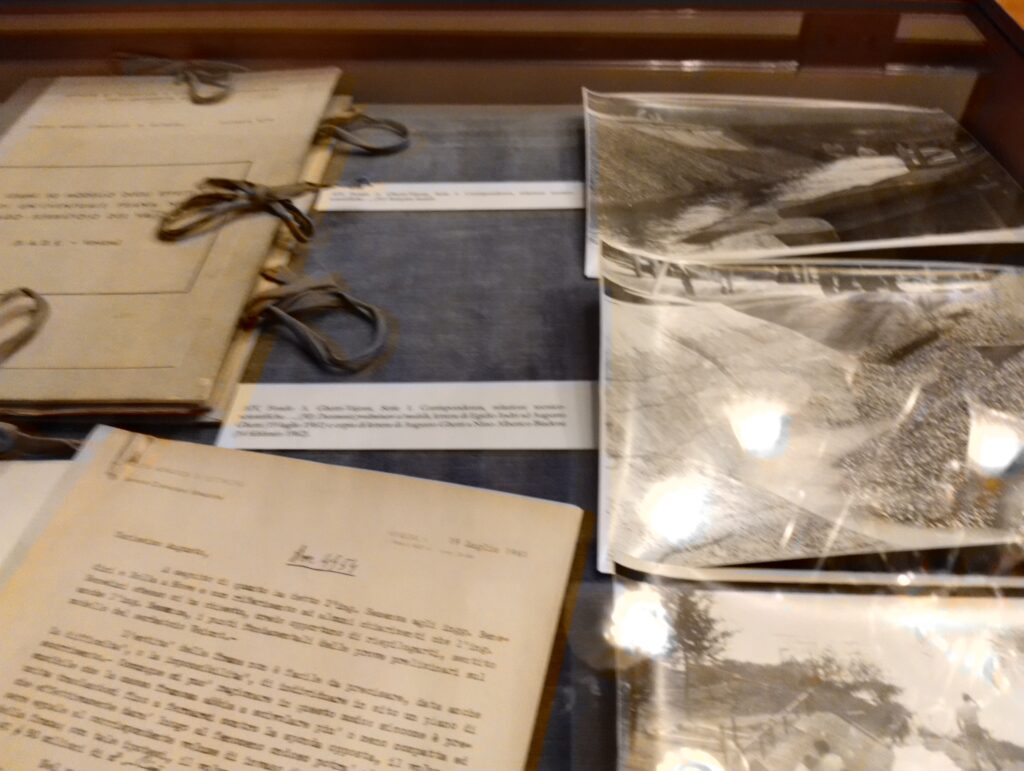
The conference dedicated to the Vajont Archive
Recently, a conference dedicated to the Vajont archive was held at the Istituto Veneto di Scienze, Lettere e Arti; Vajont, Sessant’anni dopo, fonti per la storia (Vajont 60 years later, sources for history). The conference saw various archival voices take turns, in particular the two former directors of the State Archive of Belluno, Eurigio Tonetti and Claudia Salmini, who were also long-time officials of the State Archive of Venice. They introduced us to the history of this contemporary archive, which was established following the lengthy legal process for the Vajont disaster that occurred on October 8, 1963.
A tragedy in the documents
Due to the painful nature of the subject, which touches on the sensitive chords of a catastrophe that shooked Italy, discussing this archive requires delicate and sensitive words, which we were able to hear from the conference speakers. However, the archive has its own history. While the history of the Vajont tragedy has been written by many writers, primarily by Maurizio Reberchak, who was present at the conference, the history of its archive, which also risked disappearing, is not well known.
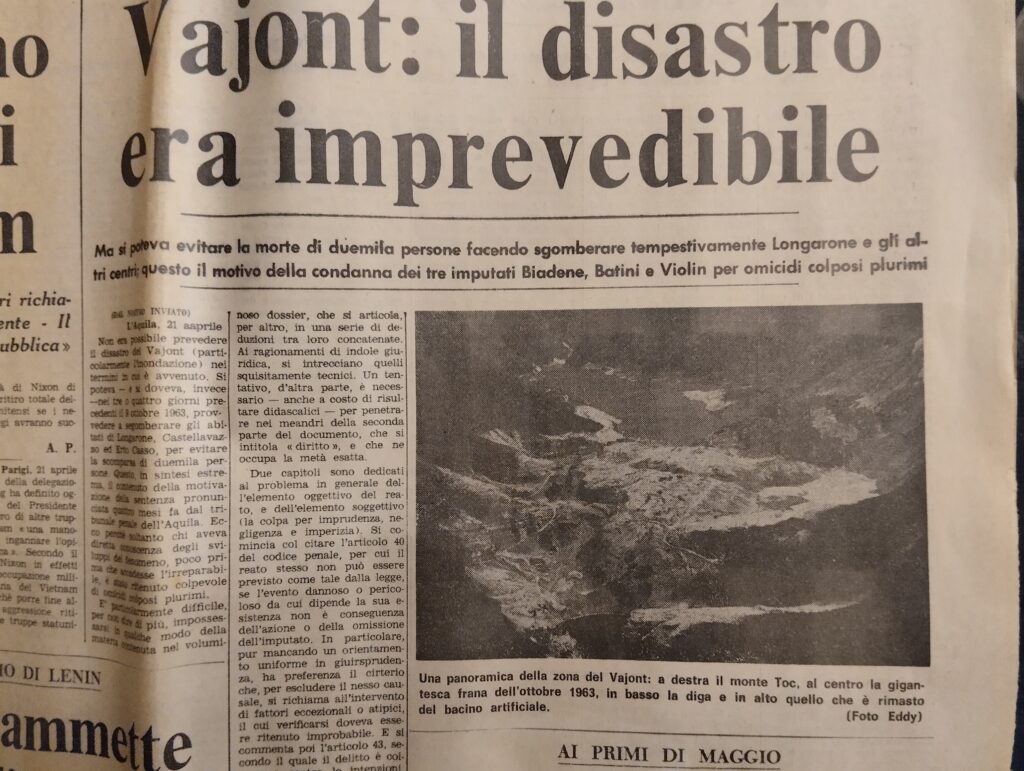
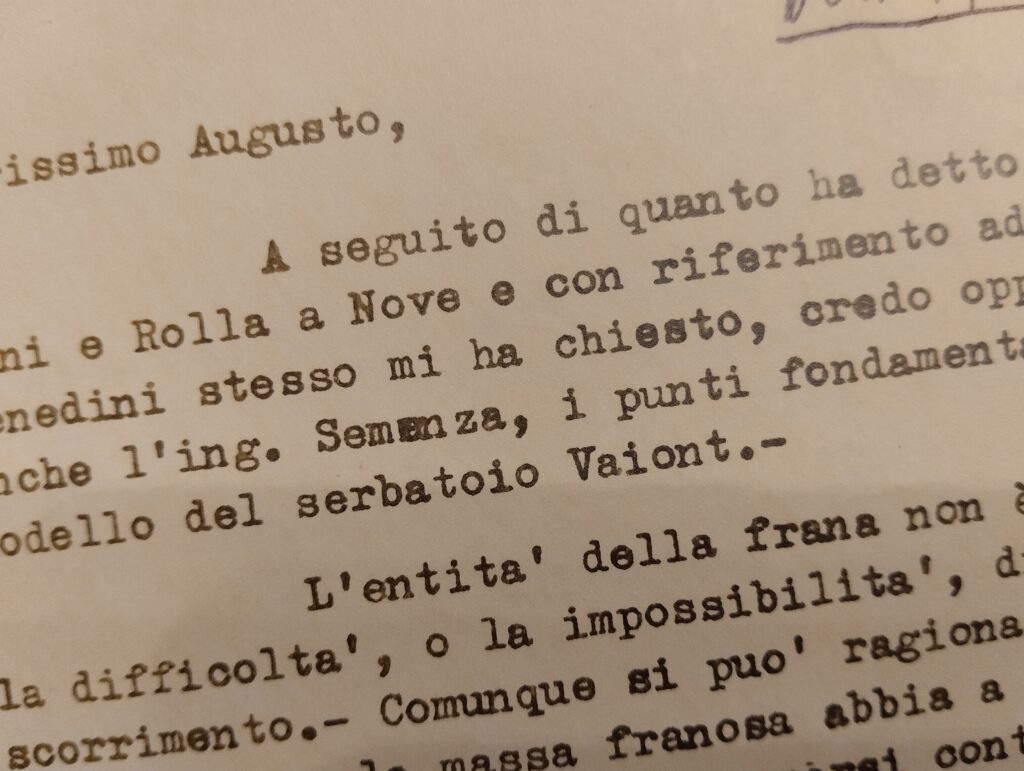
The migrations of the Vajont archive
The Vajont Archive consists of all the documentation generated during the lengthy legal process for the negligent disaster of the Vajont landslide that occurred on October 8, 1963. It contains testimonies, expert opinions, written documentation, and physical evidence, including rocks. Initially, the documentation grew to 100 folders, then increased to 256 folders. In 1968, the archive moved from Belluno to L’Aquila, shifting from the Court of Appeal to the Court of Cassation, and then returned to its original location in the Court in 1971 when the final disaster verdict was issued. As one of the speakers observed, the victims had to travel 600 kilometers to participate in the trials, even hearing their names mispronounced. According to the law, 40 years must pass before contemporary archival documentation is transferred to archives. Indeed, it was stored in L’Aquila for a long time in a basement of the courthouse. There, the documentation suffered initial damage when about ten folders were affected by water infiltration. An elderly clerk then carried it by hand to a mezzanine floor. According to the law, the archive was supposed to return to Belluno in 2009, but its transfer, which took place with an escorted truck, was advanced to 2008. This meant that the archive was not involved in the devastating earthquake in L’Aquila, which also destroyed the Prefecture Palace, where the archive was housed.
Professor Maurizio Reberschak tried to access the documentation in the 1980s and 1990s without success. It was only in 2002 that the President of the Court, who had assisted the Public Prosecutor in the first instance trial, literally opened the doors of the archive to him for the first time, allowing him to consult the documents.
His work became the book “Grande Vajont.” In early 2000s, The Survivors Committee was established. The website is touching; created by five survivors of dam collapse and also presents a rich photographic documentation. In subsequent years, The victims’ cemetery was reorganized; there were 2000 victims. The Municipality of Longarone requested access to trial records to make them available through The Vajont Onlus Association. The people from Belluno felt indeed need to reclaim their memory and on December 10th ,2009 all files arrived at Belluno.
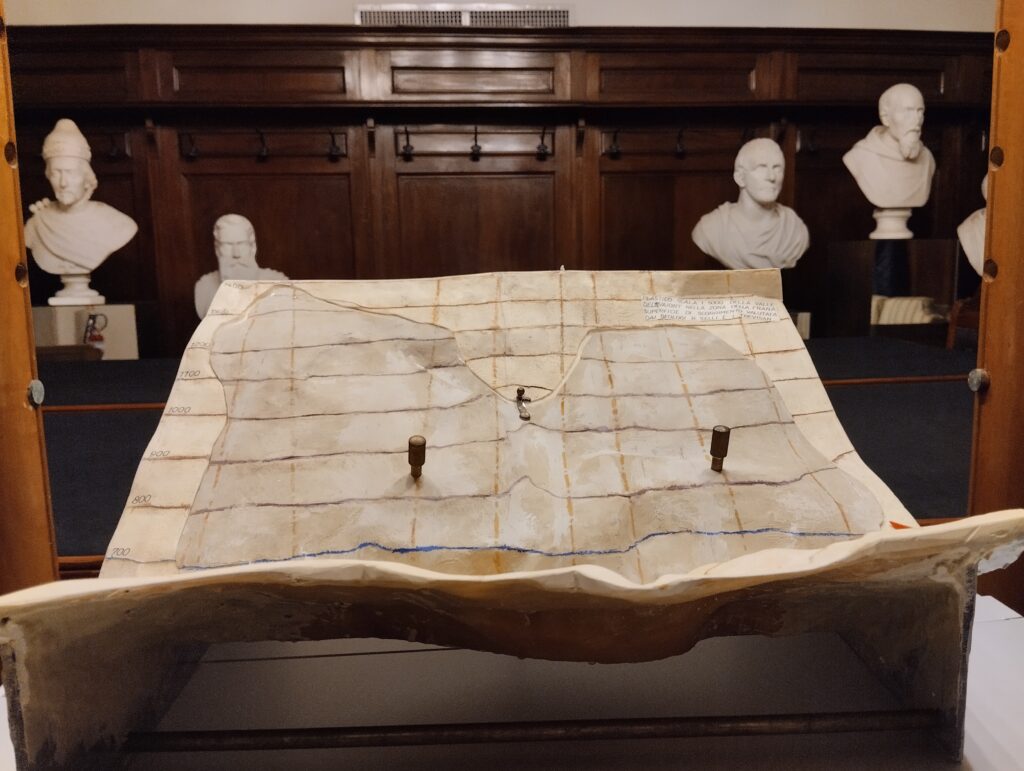
An Archive to preserve memory
The dramatic nature of this archive makes it a different kind of testimony and it was decided to leave documents where they could have meaning for Belluno community . An old church bought by Municipality was chosen as location . The Vajont Foundation and Ministry of Culture made possible cataloging work and digitalization , photographic part excluded , not yet considered publishable . Documentation was restored by Benedictine nuns, from which they drew up 3200 analytical cards . In addition to folders there were a warehouse with 126 containers with core samples ,166 wooden boxes with rocks, 21 packages with seismographic surveys and cardboard boxes with stones and gravel and two plaster models of valley and Mount Toc.
The Vajont Archive has been declared a UNESCO Heritage Site and a Memory of World in 2023.
FIORELLA PAGOTTO –
I am an art historian and writer, author of essays on art history and biographies of artists. I also deal with the history of architecture and the history of architectural restoration. I have been a guide to the city of Venice and the Venetian villas since 2012, when I passed the Veneto Region exam.
Venice, May 2024
Here the link to the Italian version
